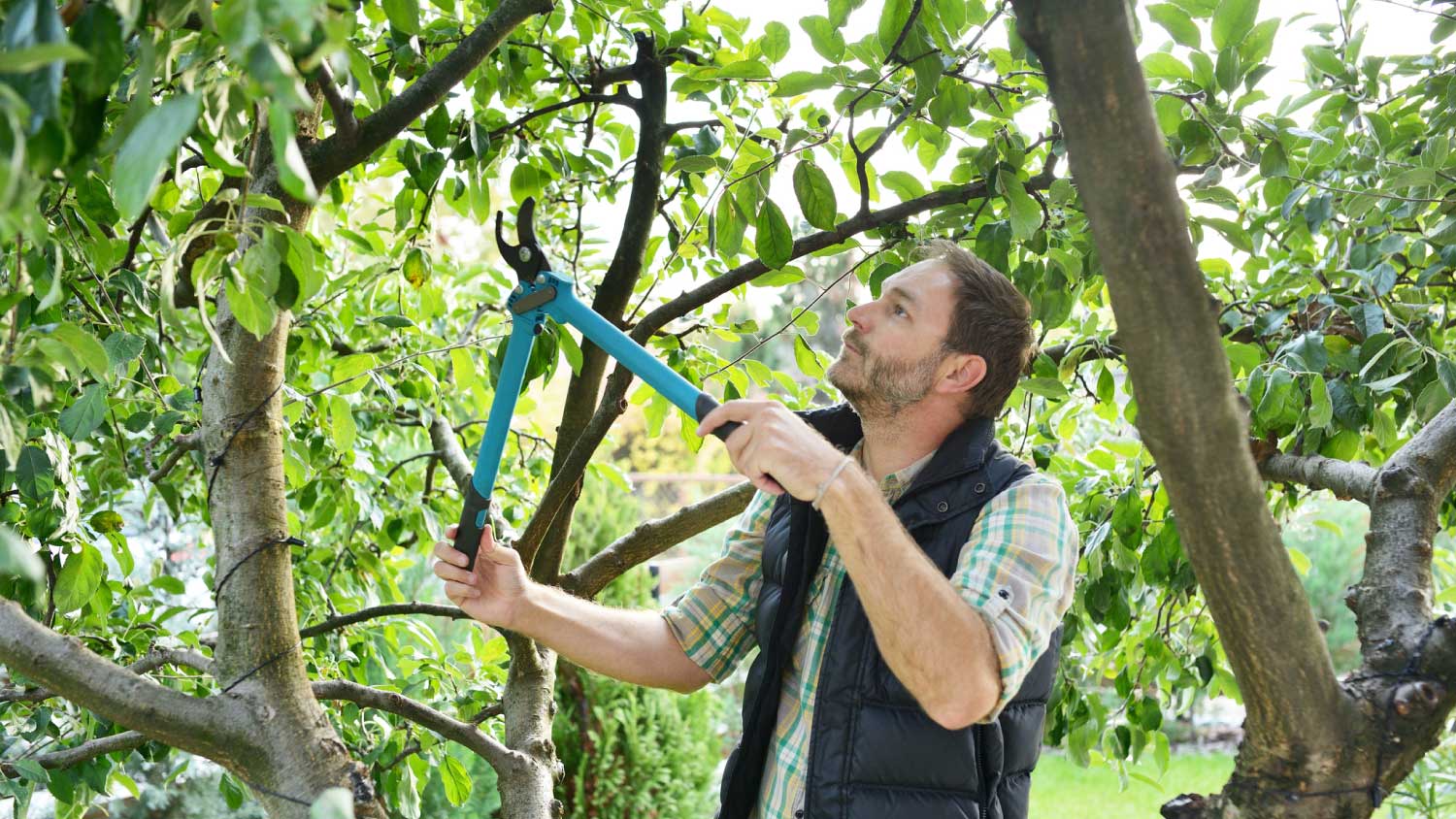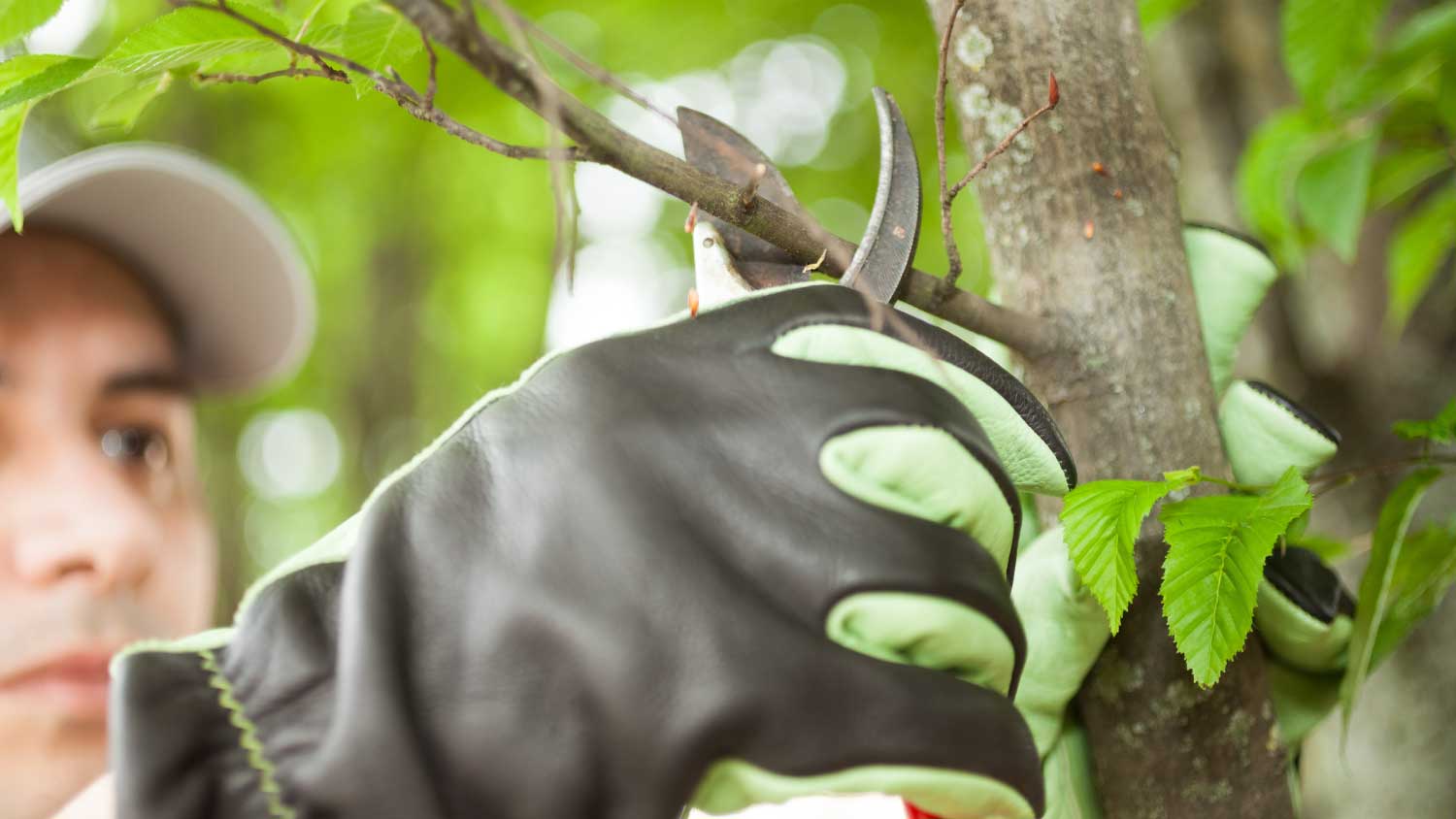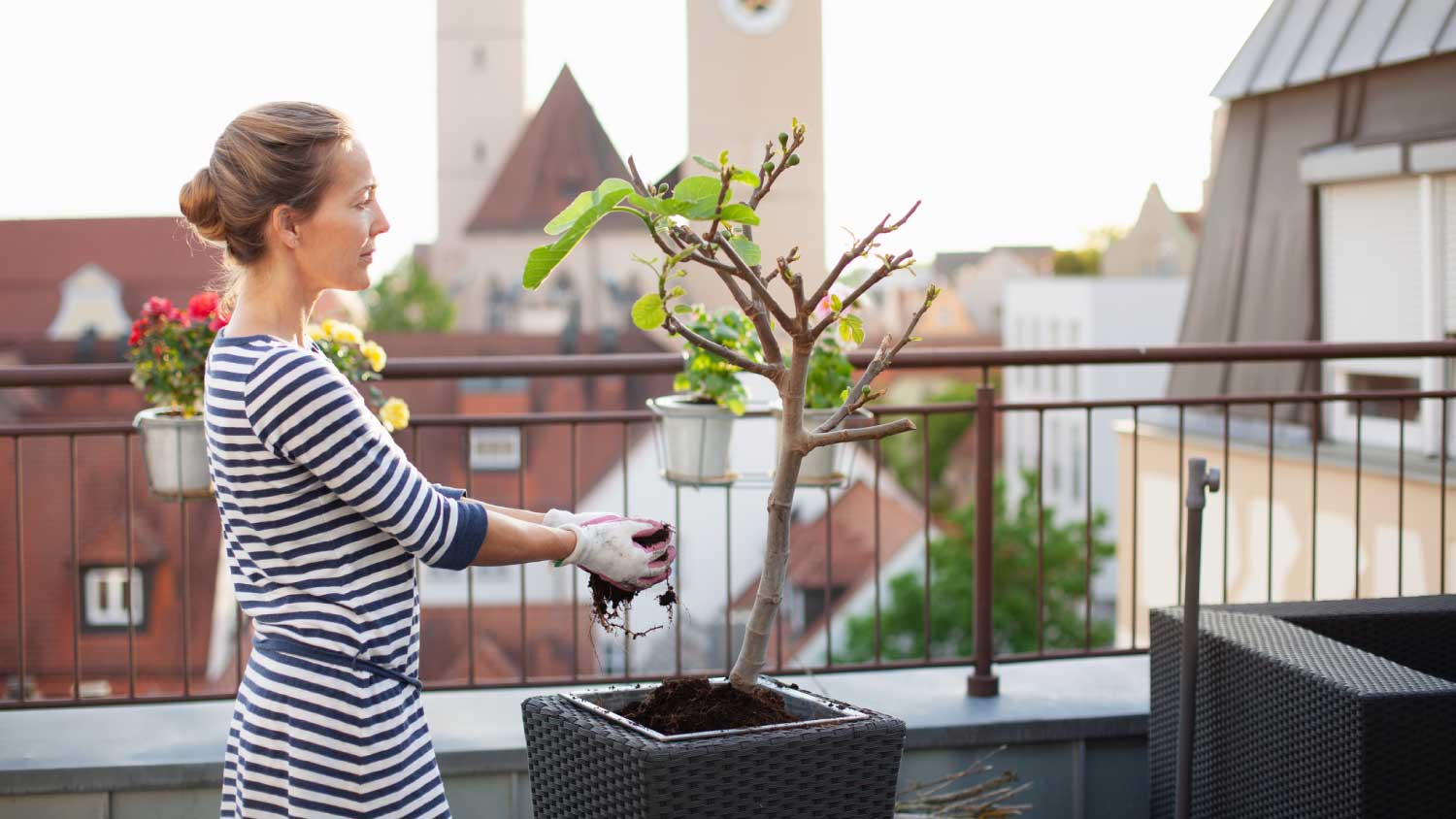Get transparent shrub removal cost info. Learn average prices, key cost factors, and tips to save on your next shrub removal project.
How to Grow a Tree From a Branch for Budget-Friendly Landscaping
Propagate your way to the prettiest yard on the block


Tree propagation is a DIY-friendly project, but if you want established trees for instant curb appeal, professionals can deliver faster results.
Hiring a local landscaping company costs $100 to $2,000, depending on tree species and size, and they can recommend optimal tree placement for growth and aesthetics.
Some tree species require specific cutting techniques and precise timing—an arborist can make sure you're propagating at the right time.
Grafted trees require advanced expertise and won't grow strong roots from branches, so you’ll want to hire a pro to help with these specialized projects.
If you have a tree you love, why not create another? Learning how to grow a tree from a branch is easier than you might think, and it’s a cost-effective way to landscape your yard.
Growing a tree from a branch yields a tree identical to the parent tree. In fact, the process is often called cloning. Bonus: Trees started from branches rather than seeds will mature much faster.
What Is Tree Propagation?
Tree propagation is starting a new tree from a cutting of an older tree. If you love an existing tree in your yard, you can have another one. You can also do a tree swap with your neighbors. Propagating will give you a tree identical to the one you take the cutting from, allowing you to create your dream yard for less.
How to Grow a Tree From a Branch

Once you learn how to grow a tree from a branch, you’ll open up a new world of budget-friendly landscaping. Whether spruce or sycamore, if you’re ready to become an amateur arborist, follow these steps to grow a tree from a cutting.
1. Choose Your Container
Start your tree propagation project by placing the cutting in water, sandy soil, or a pot. The choice is yours.
Water
Choose a jar, bottle, or vase and fill it so that 2 to 3 inches of the cutting is covered. Change the water as it evaporates. Water is a good choice because it allows you to see when the new roots start forming.
Pot
Starting your tree in a pot like a houseplant is another option. Fill the pot with potting soil and sink the cut end of the branch in. Water to keep the soil moist but not soaking.
Ground
This is the toughest option since you won’t be able to control the conditions. But you might be able to start the tree from a branch in the ground. This is best done in an area with sandy soil when it’s not too hot and not too cold, like spring or early fall. If your tree is going in the lawn, consider putting a protective cage around it so you don’t accidentally mow it down.
2. Select the Branch
The perfect branch will be about 10 inches long with leaves or needles. You’ll know it because it looks healthy and is about as thick as a pencil. Consider cutting multiple branches since not every branch will turn into a tree. It’s smart to have a few spares.
3. Make the Cut

Once you’re ready with your container, put on gloves and make the cut. Get it into moist soil or water soon after cutting to keep the end from drying out. Ideally, make the cut when the tree is a bit damp from morning dew or recent rain.
Using sharp shears, snip a 10-inch long branch right above a bud. Cut the end at an angle to maximize nutrient intake.
4. Clean the End
Remove any leaves or needles within 2 inches of the cut. Make sure you don’t have any leaves or needles below the soil or water line.
If you’re growing a branch from a hardwood tree like maple, willow, or magnolia, you can wound the last inch above the cut. To do this, score the branch with vertical cuts. This will help it absorb more water and nutrients.
5. Dip Your Branch in Hormone Powder
Pour some hormone powder in a shallow dish. Dip and roll the end of your branch in hormone rooting powder for clippings. This will help new roots form more quickly. You can purchase hormone rooting powder at garden stores.
6. Find the Perfect Spot for Your Cutting to Grow Roots

Find a location for your branch where it can receive six hours of sunlight per day. Keep the soil moist. For best results, cover your branch in plastic wrap or a zip-top bag to keep it from drying out.
Expect to see the roots start to form in about three months. You can start several branches in one large pot or container of water.
7. Put Your Cutting in Soil Once It Has Roots
Once you have a root system in place, move your growing branch to a pot with soil. You’ll know your cuttings are ready for a pot if you see roots in water.
If you started your tree in a pot, you’ll know it has roots when you tug it and there’s slight resistance. If you started several trees, it’s time to separate them into their own 4-inch pot.
Let your pots sit in a sunny spot where they stay around 65 to 70 degrees Fahrenheit and keep the soil moist for about a year. After a year, the tree should be strong enough for you to plant it in the ground. Compost any branches that don’t appear to be thriving.
8. Plant Your Tree in the Ground

Once your little tree is about a year old, it’s ready to go to its permanent home in the ground. Fall is typically the best time to plant trees, so time this project right to ensure you give your cutting the best chance at becoming a strong and healthy tree.
Planting a tree is best when the ground is still warm from summer and fall rain and dew are around to help water.
Tree Propagation Tips
Aside from consulting an arborist and gathering materials for this project, there are some other steps to help make propagation successful the first time around.
Research the Tree Species
Some trees will root best from softwood cuttings, while others will benefit from semi-hardwood or hardwood. Look into what specific type of cutting works best for your tree before you start snipping.
Choose the Right Time of Year
Timing is everything when it comes to planting trees, which is why choosing the right season to propagate is so important. In most cases, you’ll want to grow a tree from a branch in milder conditions, such as late spring or early to late fall, depending on your region’s climate. It’s best to avoid harsh temperatures in summer or winter.
Sterilize Your Tools
The cleaner the blades, the less likely your branch is to get infected with whatever residue was left behind from prior yardwork. You can use rubbing alcohol or a diluted bleach solution to sterilize prunes and scissors so you’ll get a sharp, clean cut every time.
DIY vs. Hire a Pro
Tree propagation from cuttings is a project you can easily try on your own. But if you want more established trees for an instant curb appeal boost, consider hiring a local landscaping company. They will be able to assess your yard and make recommendations for tree placement.
The cost to plant a tree varies by species and size, but expect to pay $100 to $2,000 on average.
The homeowners guide to tree services
From average costs to expert advice, get all the answers you need to get your job done.
- •

How much does it cost to rent a chainsaw? Whether it’s for cleaning up your yard or cutting firewood, learn what options are available and what you’ll pay.

Tree inspections can ensure your trees stay healthy and safe, preventing costly damage. Learn how much tree inspections cost and what can affect the price.

What’s the best tree stump killer? Learn how to kill a tree stump using these seven effective methods.

Can you cut down a tree on your property? There are laws about trees and chopping them down, so read this guide before you start a tree clearing project.

Unattended bushes and shrubs can quickly become overgrown and start causing problems. Rein them back in with our overgrown shrub trimming guide.

